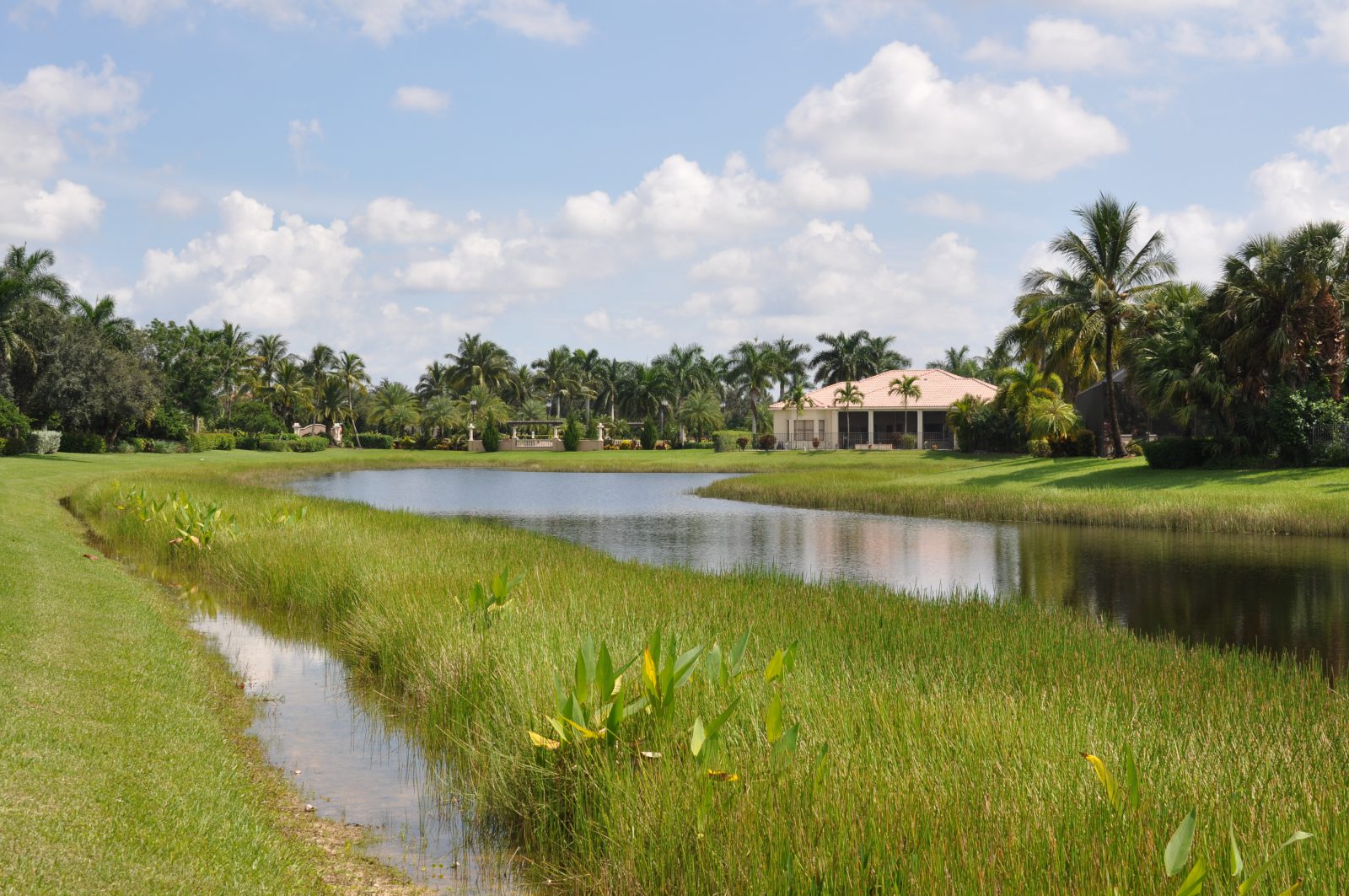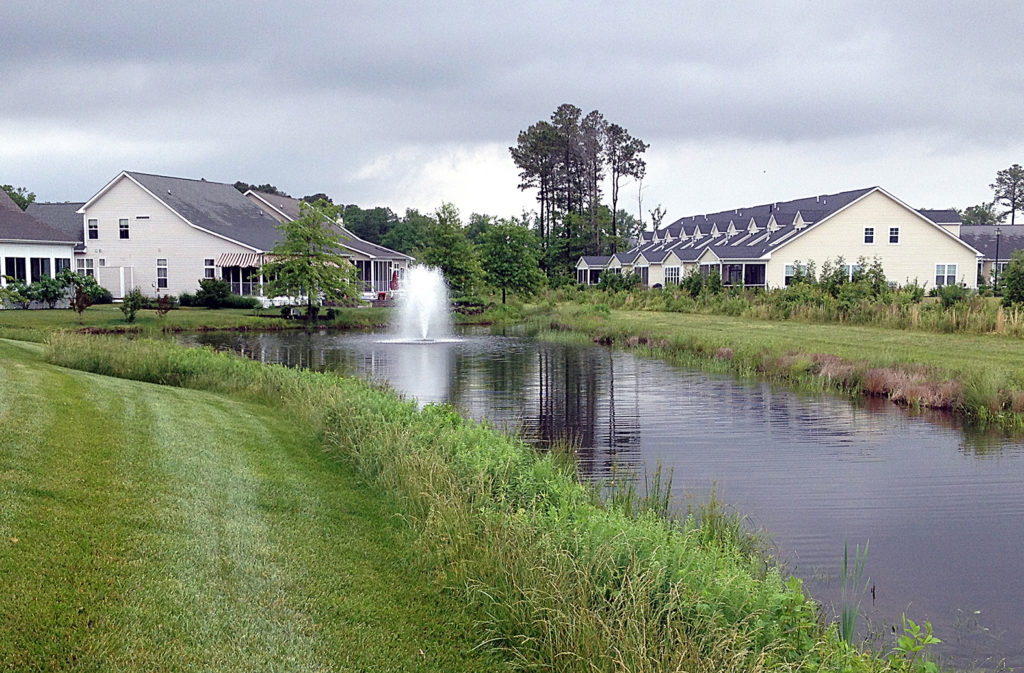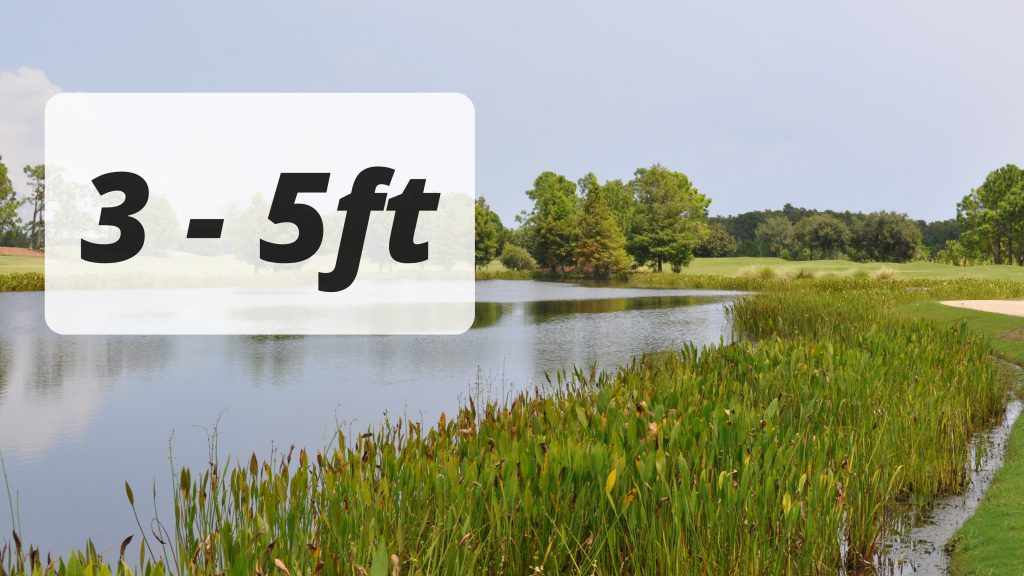
Bank Erosion Control, the Importance of Buffer Zones and Buffer Plants
Have you seen the banks of your lake or pond slowly recede and retreat year after year? Have you noticed soil and silt deposits building up along the shoreline? Does the average water depth of your waterbody get shallower each year? The erosion you are seeing is the natural, yet unwelcoming process of bank erosion. This is especially problematic in man-made lakes as nature utilizes gravity to level everything out.
With erosion comes the mobility of additional pollutants into your water including nutrients, chemicals, and additional pathogens. When you combine all these factors, erosion can contribute to an overwhelming amount of stress factors on water quality, wildlife balance, and functionality. In most cases, the easiest and most cost-effective measure to help prevent bank erosion is by creating a vegetative buffer zone. This should also be the first consideration when designing a long-term solution to an existing bank erosion problem.
What are some benefits of a vegetative buffer?
The number one benefit of a beneficial vegetative buffer is its ability to act as a natural filter for runoff. The longer and wider the buffer zone extends, the more particles it can slow down, intercept, and settle before reaching the pond. Vegetation can also protect the bank from rain-impact erosion. Raindrops that hit bare soil can displace a lot of soil in a short amount of time. Another critical defense a buffer zone can provide is protection from wind and wave erosion. Plant roots can also help hold soil together whether it is along the shoreline in the water or even upland.
A robust, healthy buffer can further provide a variety of other benefits and landscaping bio-diversity. Nuisance levels of geese infestation are less likely to occur in waters surrounded by wide, thick buffer zones. This is because the geese are fearful of predators lurking in the vegetation and this trepidation deters them. A diverse buffer zone full of a wide variety of native plants can also help encourage a healthy population of native pollinators, songbirds, butterflies, and other desirable wildlife. Another added bonus is that a wall of vegetation can form a great blockade to windblown garbage that would otherwise end up polluting the waterbody. The cherry on top is that a well-designed buffer adds beauty to your aquatic ecosystem and enhances the view and overall aesthetics of your lake or pond.
What are the most important characteristics to consider when establishing a vegetative buffer?
To settle out the soil particles, the primary consideration of a buffer is width and at least 3-5 feet is recommended. The buffer zone needs to be able to slow down the soil so that it can infiltrate or percolate into the upland areas or bank, as opposed to running directly into the pond. If geese deterrence is also an objective, then plant density and height is encouraged to close any large gaps or pathways to the pond. Furthermore, plant species should be considered for long-term sustainability and bio-diversity. Choose a variety of native plants, keeping in mind aspects like flower color, wildlife value, growing conditions, and survivability for your specific region. In areas where only a small buffer can be created, the focus should be more on an abundance of native grasses and keep out invasive trees, vines, and nuisance broadleaf weeds through regular maintenance.
At the end of the day, any amount of vegetation between soil mobility and surface water will be beneficial, even if it is just a strip of grass. There is a direct correlation between input and output when it comes to buffer zone construction and subsequent water quality. The buffer zone is the first and sometimes only filter opportunity that property owners have complete control over when it comes to water management. It also serves to protect the shoreline and upland areas from erosion. If designed well, a vegetative buffer zone can actually be an amenity to the surrounding landscape and provide joy to humans and wildlife alike.
Shoreline Erosion Restoration
If your shoreline has erosion damage and is in need of restoration, a SOX System may be the perfect solution to enhance your waterbody. SOX is a patented photodegradable knitted mesh system that can be utilized to create a long-lasting sediment containment barrier around the water. Once in place, grass, native vegetation, and buffer plants can be installed directly into the knitted mesh, creating a beautiful and living wall of plants. One benefit of the SOX mesh technology is that it will not rip or lose its integrity over time, but rather, continue to hold the earth in place.
Learn more about this innovative technology below!
SOLitude Lake Management is a nationwide environmental firm committed to providing sustainable solutions that improve water quality, enhance beauty, preserve natural resources and reduce our environmental footprint. SOLitude’s team of aquatic resource management professionals specializes in the development and execution of customized lake, pond, wetland and fisheries management programs that include water quality testing and restoration, nutrient remediation, algae and aquatic weed control, installation and maintenance of fountains and aeration systems, bathymetry, mechanical harvesting and hydro-raking, lake vegetation studies, biological assessments, habitat evaluations, and invasive species management. Services and educational resources are available to clients nationwide, including homeowners associations, multi-family and apartment communities, golf courses, commercial developments, ranches, private landowners, reservoirs, recreational and public lakes, municipalities, drinking water authorities, parks, and state and federal agencies. SOLitude Lake Management is a proud member of the Rentokil Steritech family of companies in North America.











